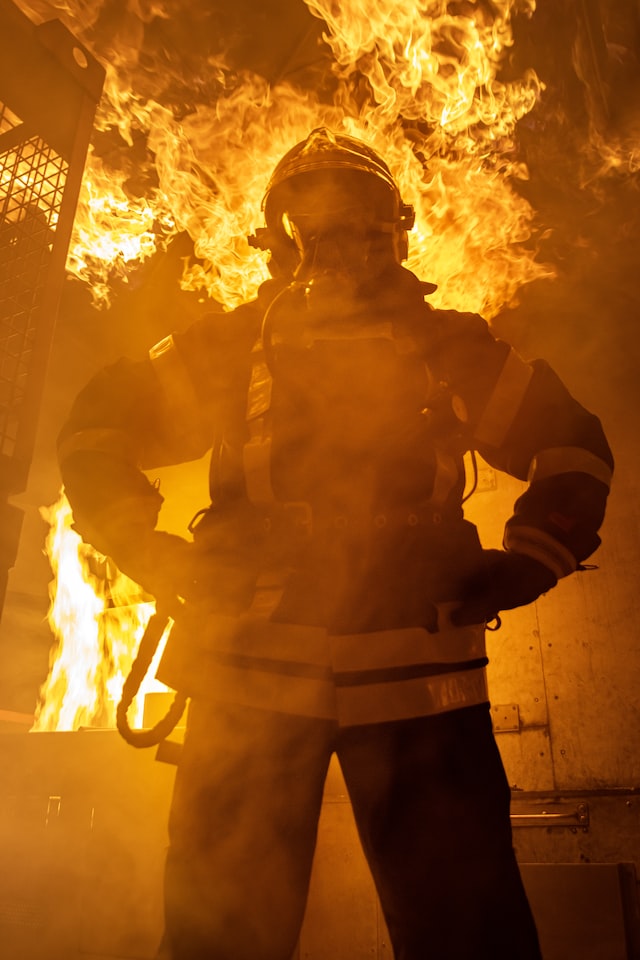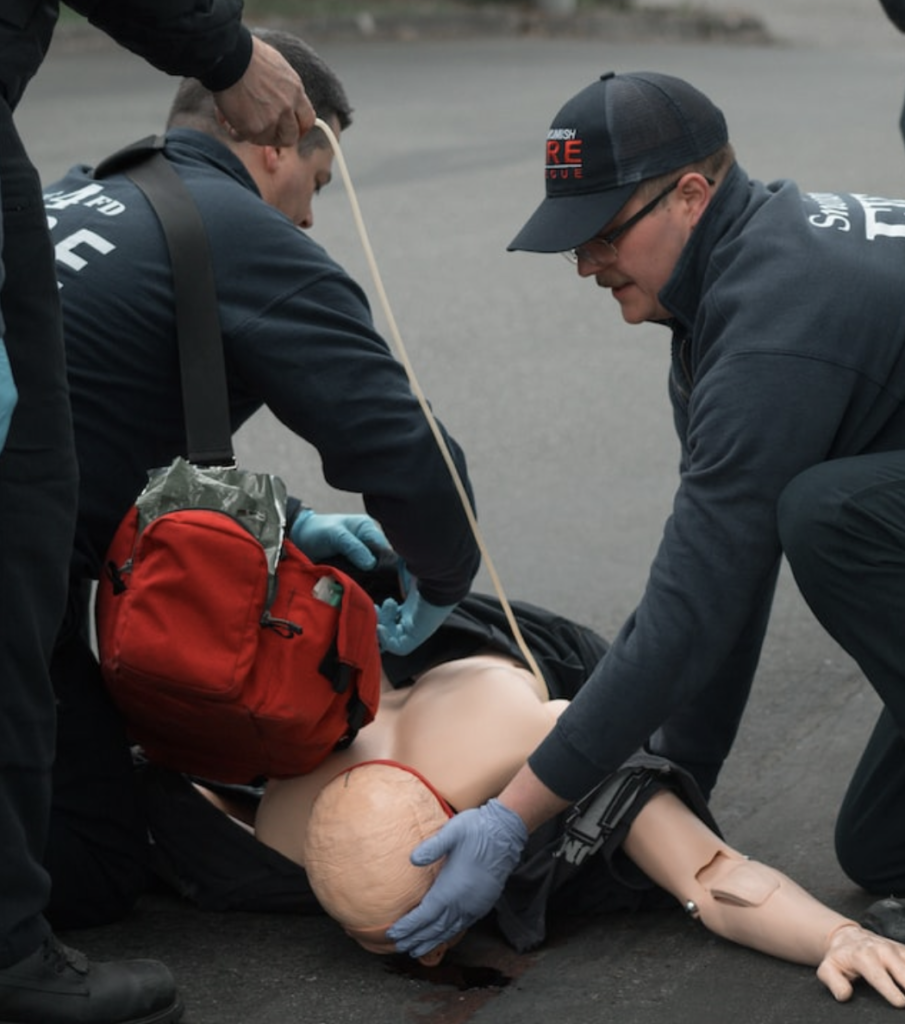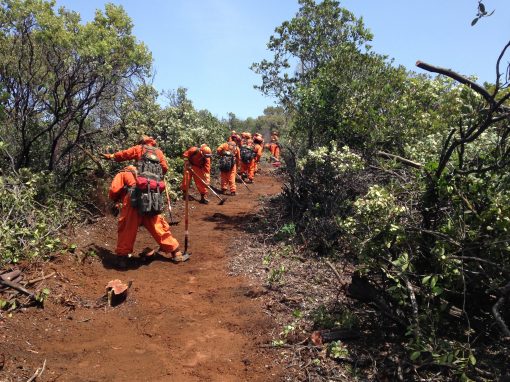Being a firefighter is a challenging and rewarding profession. It requires a combination of physical fitness, mental toughness, and specialized training to respond to and manage a wide range of emergencies effectively. This post will give an overview of the training needed to become a firefighter, from the initial steps to the ongoing education and development required to succeed in this challenging and rewarding profession.

Basic requirements
First and foremost, aspiring firefighters must be physically fit and possess great strength. Firefighting is a physically demanding job, and firefighters need to be in excellent physical condition to handle the rigors of the job. Additionally, they should have good balance, coordination, and agility, as these skills are essential for safely navigating dangerous environments.
Age requirements for firefighters vary by jurisdiction; however, in most cases, the minimum age to apply is 18 or 21, and the maximum age at the time of application is 35. All departments require applicants to have a high school diploma or an equivalent GED certificate. Those interested in becoming firefighters may also benefit from pursuing higher education such as a college degree, emergency services management, or fire science certificate.
Some fire departments require certifications and licenses. These may include a valid driver’s license, first aid and CPR certifications, EMT training, and other specialized training and certifications.
Initial training: Fire Academy
All firefighters must complete an initial training program before becoming certified and beginning to work in the profession. The most common type of initial training is at a fire academy, which a local fire department, a local community college, or a third-party agency typically runs.
Fire academies provide students with the necessary skills and knowledge to become successful members of the firefighting community. During their time in the academy, firefighters learn about certain topics such as building construction, hazardous materials, fire prevention, fire science and principles, rescue tactics and operations, emergency medical care, and many other areas.
The firefighter academy is typically divided into two parts: coursework and hands-on training. Coursework involves classroom lectures and online learning components designed to provide an in-depth understanding of the various topics related to firefighting.
Fire recruits also participate in hands-on training activities where they practice what they have learned in real-world scenarios. This training helps prepare them for situations they may encounter while on duty.
The fire academy will test the students’ knowledge and skillset before being certified as professional firefighters. The testing phase includes a written exam and CPAT, a candidate physical ability test that measure a candidate’s strength, agility, and endurance levels. Once they pass the test, the candidates are officially certified by their respective state or city government agency and ready to take on their new role as a firefighter.

Snohomish County Fire District #4 training with a dummy
Fire Science
Fire science is a field that focuses on the study and application of fire safety principles and practices. It includes topics such as combustion characteristics, fire behavior, hazardous materials management, and disaster management.
The role of fire science in the fire service is to provide knowledge about the technical aspects of fighting fires and understanding the laws related to fire safety. Firefighters use this knowledge to protect lives and property from danger.
A fire science degree can open up career paths within the field of public safety. People with a degree in fire science can become firefighters, fire chiefs, or even fire inspectors at their local department or organization. They may also take on roles in emergency management positions outside of traditional fire departments where knowledge about the principles of Fire Science is fundamental.
Those who have completed a degree program in fire science can apply for higher-level positions, such as becoming a fire captain or fire chief within their respective departments.
Ongoing Firefighter training and development
Firefighting is a demanding job requiring constant learning and updating of skills to stay current with the most effective strategies for dealing with fires. Firefighters must continually stay up-to-date on the latest methods of fire safety, fire prevention, emergency management, building construction safety protocols, and life-saving techniques such as CPR.
As new technologies become available or changes are made in safety regulations, firefighters must adjust their approach accordingly. They may also be required to refresh their knowledge periodically through continuing education classes or hands-on refresher training to remain certified by the state where they serve.
Continuing Education and Certifications
For firefighters to be legally allowed to respond to emergency calls for service in their jurisdiction, they must obtain an appropriate level of certification from the state where they work. They need to pass both written exams as well as practical skill tests.
One type of exam is an EMT certification test, an emergency medical technician test, which proves that a firefighter is knowledgeable about medical emergencies. Furthermore, some certifications require firefighters to take annual refresher courses to maintain their qualifications over time.
Specialized Firefighter Training for Specific Roles and Situations
In addition to initial certifications and regular refresher courses, many firefighters often receive specialized training tailored towards specific roles or situations they might encounter while on duty. For instance, emergency responders who work with hazardous materials may have a particular training designed specifically around handling these dangerous substances safely and efficiently while minimizing the risk of injury.
Additionally, special teams within a fire department may have specific tasks, such as high-rise rescues or vehicle extrication operations, that require extensive preparation before attempting these operations in real-life scenarios.
Physical Fitness and Maintenance of Skills
Physical fitness is crucial for all firefighters, regardless of specialty, due to the intense physical labor associated with this profession’s daily duties. Because many tasks involve moving heavy equipment up flights of stairs during structure fires or similar scenarios, strong cardiovascular capacity and muscular endurance are essential for any successful firefighter candidate. Similarly, maintenance of skills is also important for ongoing success. Drills must be conducted regularly so that team members can keep up-to-date on the latest techniques concerning fire suppression tactics or HAZMAT operations.

Young men and women participating in a firefighting training program at the Pine Grove Youth Conservation Camp in California
Firefighter Training: The journey from rookie to pro
The journey from a rookie to a professional firefighter is a long one. There will be many tests and challenges along the way. But the rewards of becoming a fully-trained firefighter are plentiful. When you become a firefighter, you can serve your community by saving lives. You also work with a team of dedicated professionals committed to making the world safer.
Training is crucial for all aspiring firefighters. The comprehensive training prepares firefighters and ensures their safety as well as the safety of others.


